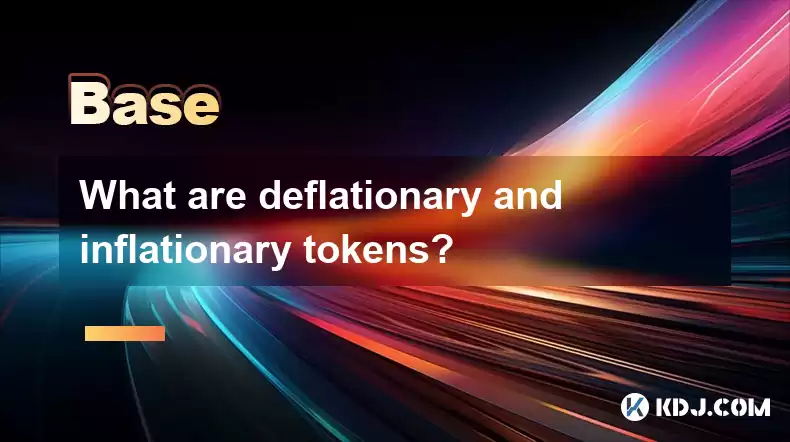-
 Bitcoin
Bitcoin $115100
1.27% -
 Ethereum
Ethereum $3675
2.71% -
 XRP
XRP $2.995
1.45% -
 Tether USDt
Tether USDt $1.000
0.02% -
 BNB
BNB $769.8
2.64% -
 Solana
Solana $168.0
3.25% -
 USDC
USDC $0.9999
-0.01% -
 TRON
TRON $0.3371
1.48% -
 Dogecoin
Dogecoin $0.2051
3.36% -
 Cardano
Cardano $0.7394
2.30% -
 Hyperliquid
Hyperliquid $38.15
0.42% -
 Stellar
Stellar $0.3966
-0.36% -
 Sui
Sui $3.486
2.93% -
 Chainlink
Chainlink $16.72
2.52% -
 Bitcoin Cash
Bitcoin Cash $568.0
4.36% -
 Hedera
Hedera $0.2440
2.59% -
 Ethena USDe
Ethena USDe $1.001
0.04% -
 Avalanche
Avalanche $22.16
2.06% -
 Litecoin
Litecoin $119.1
-0.73% -
 UNUS SED LEO
UNUS SED LEO $8.991
0.04% -
 Toncoin
Toncoin $3.232
-0.39% -
 Shiba Inu
Shiba Inu $0.00001233
2.82% -
 Uniswap
Uniswap $9.717
2.53% -
 Polkadot
Polkadot $3.664
1.85% -
 Dai
Dai $1.000
0.01% -
 Monero
Monero $281.2
-3.89% -
 Bitget Token
Bitget Token $4.350
1.55% -
 Cronos
Cronos $0.1428
5.07% -
 Pepe
Pepe $0.00001050
3.68% -
 Aave
Aave $262.3
3.54%
What are deflationary and inflationary tokens?
Deflationary tokens, like Bitcoin (though not perfectly so), decrease in supply over time, potentially increasing value due to scarcity, while inflationary tokens, common in DeFi, increase supply through staking rewards, boosting accessibility but risking price dilution.
Mar 05, 2025 at 01:48 pm

Key Points:
- Deflationary tokens: Their total supply decreases over time, leading to potentially higher value due to scarcity. Mechanisms include burning tokens or a fixed, limited supply.
- Inflationary tokens: Their total supply increases over time, often through mechanisms like staking rewards or block rewards. This can increase accessibility but may dilute existing holders' value.
- Key Differences: Primarily revolve around token supply dynamics and their impact on token price and overall market sentiment.
- Examples: Bitcoin (deflationary, though technically not perfectly so due to lost coins), many meme coins (often inflationary), and various DeFi projects offering staking rewards (inflationary).
What are Deflationary Tokens?
Deflationary tokens are cryptocurrencies designed with a mechanism that reduces their total supply over time. This scarcity, similar to precious metals, is intended to drive up the token's value. The reduction in supply is usually achieved through "burning" – permanently removing tokens from circulation. Some projects also achieve deflationary pressure through a fixed, limited maximum supply, making new tokens impossible to create beyond a certain point. The expectation is that demand will outpace supply, increasing the token's price.
Mechanisms for Deflationary Tokens:
Several mechanisms contribute to a deflationary token's supply reduction. These are often integrated into the token's smart contract.
- Token Burning: A portion of transaction fees or a percentage of tokens are periodically destroyed, reducing the overall supply.
- Fixed Supply: A predetermined maximum supply is set, preventing the creation of new tokens. This creates inherent scarcity.
- Buyback and Burn Programs: Projects may repurchase tokens from the market and subsequently burn them, reducing circulating supply.
What are Inflationary Tokens?
Inflationary tokens, conversely, have a total supply that increases over time. This increase is often a built-in feature of the token's design and serves several purposes. New tokens are often created as rewards for network participation, such as staking or mining. This incentivizes users to contribute to the network's security and functionality. While seemingly counterintuitive to traditional finance, the constant influx of new tokens can foster wider adoption and liquidity. The increased supply, however, can lead to price dilution for existing holders.
Mechanisms for Inflationary Tokens:
Inflationary tokens utilize several methods to increase their total supply.
- Staking Rewards: Users who lock up their tokens receive newly minted tokens as a reward.
- Block Rewards: Miners or validators receive newly created tokens for securing the network.
- Pre-mine: A significant portion of tokens are created and distributed before the token's public launch.
Comparing Deflationary and Inflationary Tokens:
The core difference lies in their supply dynamics. Deflationary tokens aim for scarcity, potentially driving up price but potentially limiting accessibility. Inflationary tokens prioritize wider adoption and network participation through continuous token creation, but this comes at the cost of potential price dilution. The choice between these models depends on the project's goals and the intended user base. There are advantages and disadvantages to both approaches.
Examples of Deflationary and Inflationary Tokens:
While Bitcoin is often cited as a deflationary token due to its limited supply of 21 million coins, it's important to note that it's not perfectly deflationary due to the possibility of lost or inaccessible coins. Many newer projects aim for true deflationary models through various burning mechanisms. Conversely, many altcoins, especially those built on Proof-of-Stake (PoS) consensus mechanisms, are inherently inflationary due to the staking rewards they offer. Many meme coins also fall into the inflationary category.
The Impact of Tokenomics on Price:
The tokenomics – the economic principles governing a cryptocurrency's supply and distribution – significantly impact its price. Deflationary models often create a sense of scarcity, potentially driving up demand and price. However, extreme deflation can hinder liquidity and accessibility. Inflationary models can promote wider adoption and network participation, but excessive inflation can lead to significant price depreciation.
Risks and Considerations:
Investing in either deflationary or inflationary tokens involves risks. Deflationary tokens might experience low liquidity, making it difficult to sell. Inflationary tokens, while potentially more liquid, face the risk of significant price dilution if the rate of inflation is too high. Thorough research into a project's tokenomics is crucial before investment.
Common Questions:
Q: Are deflationary tokens always a better investment?
A: Not necessarily. While scarcity can drive up value, low liquidity and limited accessibility can offset potential gains. The success of a deflationary token depends heavily on its adoption and utility.
Q: Can an inflationary token ever appreciate in value?
A: Yes. If the demand for an inflationary token grows faster than its supply increases, its price can still appreciate. Strong utility and community support are crucial factors.
Q: How can I determine if a token is truly deflationary?
A: Carefully examine the project's whitepaper and smart contract code to verify the token burning mechanisms and the total supply limits. Look for verifiable on-chain data confirming the reduction in supply.
Q: What are the long-term implications of inflationary tokens?
A: Long-term price appreciation depends on various factors, including adoption, utility, and the rate of inflation. High inflation can lead to significant price depreciation, while controlled inflation can coexist with price growth. Understanding the project's long-term vision and sustainability is key.
Disclaimer:info@kdj.com
The information provided is not trading advice. kdj.com does not assume any responsibility for any investments made based on the information provided in this article. Cryptocurrencies are highly volatile and it is highly recommended that you invest with caution after thorough research!
If you believe that the content used on this website infringes your copyright, please contact us immediately (info@kdj.com) and we will delete it promptly.
- Fireverse Token: Igniting a Musical Revolution in Web3
- 2025-08-07 08:27:45
- Ethereum, L2 Withdrawals, and Decentralization: A New Yorker's Take
- 2025-08-07 08:32:33
- Avalanche vs. Ruvi AI: Daily Sales Tell a Story of Crypto Disruption
- 2025-08-07 06:29:35
- DeSoc: The Crypto to Buy Now for a Decentralized Future (and Maybe 43x Gains!)
- 2025-08-07 06:50:16
- Arctic Pablo Coin: Riding the Meme Coin Wave with a Deflationary Twist
- 2025-08-07 07:18:13
- XRP Price Skyrocket? Decoding the Cryptocurrency's Next Move
- 2025-08-07 07:31:50
Related knowledge

What is the difference between CeFi and DeFi?
Jul 22,2025 at 12:28am
Understanding CeFi and DeFiIn the world of cryptocurrency, CeFi (Centralized Finance) and DeFi (Decentralized Finance) represent two distinct financia...

How to qualify for potential crypto airdrops?
Jul 23,2025 at 06:49am
Understanding What Crypto Airdrops AreCrypto airdrops refer to the distribution of free tokens or coins to a large number of wallet addresses, often u...

What is a crypto "airdrop farmer"?
Jul 24,2025 at 10:22pm
Understanding the Role of a Crypto 'Airdrop Farmer'A crypto 'airdrop farmer' refers to an individual who actively participates in cryptocurrency airdr...

What is the difference between a sidechain and a Layer 2?
Jul 20,2025 at 11:35pm
Understanding the Concept of SidechainsA sidechain is a separate blockchain that runs parallel to the main blockchain, typically the mainnet of a cryp...

What is the Inter-Blockchain Communication Protocol (IBC)?
Jul 19,2025 at 10:43am
Understanding the Inter-Blockchain Communication Protocol (IBC)The Inter-Blockchain Communication Protocol (IBC) is a cross-chain communication protoc...

How does sharding improve scalability?
Jul 20,2025 at 01:21am
Understanding Sharding in BlockchainSharding is a database partitioning technique that is increasingly being adopted in blockchain technology to enhan...

What is the difference between CeFi and DeFi?
Jul 22,2025 at 12:28am
Understanding CeFi and DeFiIn the world of cryptocurrency, CeFi (Centralized Finance) and DeFi (Decentralized Finance) represent two distinct financia...

How to qualify for potential crypto airdrops?
Jul 23,2025 at 06:49am
Understanding What Crypto Airdrops AreCrypto airdrops refer to the distribution of free tokens or coins to a large number of wallet addresses, often u...

What is a crypto "airdrop farmer"?
Jul 24,2025 at 10:22pm
Understanding the Role of a Crypto 'Airdrop Farmer'A crypto 'airdrop farmer' refers to an individual who actively participates in cryptocurrency airdr...

What is the difference between a sidechain and a Layer 2?
Jul 20,2025 at 11:35pm
Understanding the Concept of SidechainsA sidechain is a separate blockchain that runs parallel to the main blockchain, typically the mainnet of a cryp...

What is the Inter-Blockchain Communication Protocol (IBC)?
Jul 19,2025 at 10:43am
Understanding the Inter-Blockchain Communication Protocol (IBC)The Inter-Blockchain Communication Protocol (IBC) is a cross-chain communication protoc...

How does sharding improve scalability?
Jul 20,2025 at 01:21am
Understanding Sharding in BlockchainSharding is a database partitioning technique that is increasingly being adopted in blockchain technology to enhan...
See all articles

























































































